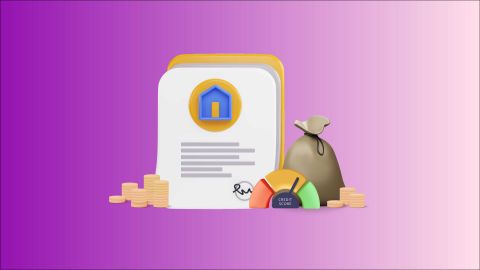A report by The Economic Times states that this year onwards, you must pre-validate your bank account and link your PAN with it in order to claim an income tax refund. Additionally, the only way to get back excess money paid to the government is to apply for a tax refund online. An IT refund is possible when the amount you need to pay the tax department is less than the amount that you have already paid.
While you may be well-versed with how to file income tax returns, you may not know what to do in case there is such a mismatch. Read on to know what is a tax refund, how to get one, and how to check an income tax refund status online.
A Brief Introduction of IT Refund
What is Income Tax Refund
Income tax refund is a process wherein you make a claim to the government for reimbursement of any excess money that you have paid as tax. In simple terms, you are eligible for a refund of Income Tax you paid when the amount of tax paid during a financial year exceeds your total tax liability. The provision for an income tax refund is specified in Section 237 of the Income Tax Act 1961. After scrutiny and verification of your claim, the Income Tax Department issues a refund order.
Now that you know what an income tax refund is, learn about how to get one online.
Process to Claim Income Tax Refund Online for FY 2024-25
If you’re thinking about how to get an income tax refund, the good news is that there isn’t any special system that you need to follow. Moreover, you do not have to have to submit a separate income tax refund form to make a claim. All you need to do is file your income tax return. Follow this up by verifying your returns online or physically through form ITR-V within 120 days of filing income tax returns.
Post this, your claim is scrutinised by the Centralised Processing Centre, and if it’s free of errors, a refund will be issued. It's important to know that e-verification is preferable as it hastens the income tax refund process, which tends to take around 3 to 6 months from the time you e-file your ITR. As per a recent update, you can file your ITR for FY 18–19 by 31 August 2019. If free of discrepancies, your ITR status will show up as ‘ITR processed’.
Today, the online income tax refund method is the only one you can use. Also, it’s vital that you fill out your ITR form carefully, as your refund is calculated on the basis of the data you enter. For instance, in the event that you fail to mention investments via Form 16, you may end up paying more tax than you need to. In such cases, to claim an income tax refund, Form 30 comes into the picture, allowing you to request that your case be considered.
Having understood how to get an income tax refund, learn about the eligibility terms required to make a claim.
Eligibility Criteria for Income Tax Refund
In simple words, you qualify for an income tax refund when you have paid the government more tax than you need to. That said, here are a few cases in which you would be eligible for a refund.
- When the tax deducted at source (TDS) exceeds your tax liability. For instance, if the amount of tax you need to pay after assessment is Rs.27,000 and your employer deducts Rs.32,000 as tax at source, you can claim a refund of Rs.5,000.
- In the event that you have made investments that offer deductions that you have not declared to the Income Tax Department.
- If your income is also taxed in a foreign country with which India has an agreement, you can make a claim to avoid double taxation. For instance, in case you have an NRO account with an Indian bank and qualify to be exempt from taxation as per the double taxation agreement, you can claim a tax refund amounting to the tax deducted at source by the bank. Normally, banks cut tax at source when paying you interest as per the income tax slab rate that applies to you.
Time Period for Claiming an Income Tax Refund
As a general rule, you must claim an IT refund within a year from the end of the assessment year. Nevertheless, in certain scenarios you can extend the time limit. However, even in such cases certain conditions must be met. For instance, the refund amount for the assessment year must be less than Rs.50 lakh.
Interest Applicable on Delayed Income Tax Refunds
In the event of a delay in refunding the excess taxes paid, you may find that the amount you finally receive is more than what you were anticipating. This is because the Income Tax Department issues a refund with interest when the refund is at least 10% of the taxes paid. The provision for this is specified under Section 244A of the IT Act and the interest that you enjoy is 0.5% per month or 6% per annum.
How to Check your Income Tax Refund Status
Made a claim and wondering how to check the income tax refund status? You can do so via the two options listed below.
Step 1: Visit the Income Tax Department's e-filing website
- Go to www.incometax.gov.in
- Click on "Login" and enter your PAN, password, and captcha code
Step 2: Navigate to the "My Account" section
- After logging in, click on "My Account" in the top menu bar
Step 3: Click on "View Returns/Forms"
- In the "My Account" section, click on "View Returns/Forms"
Step 4: Select the assessment year and return type
- Select the assessment year for which you want to check the refund status
- Select the return type as "Income Tax Return"
Step 5: Click on "View Details"
- Click on "View Details" to see the refund status
Step 6: Check the refund status
- If your refund has been processed, you will see the refund amount and the date of processing
- If your refund is still pending, you will see the status as "Refund pending"
NSDL Website Method
Step 1: Visit the NSDL website
- Go to www.tin-nsdl.com
- Click on "Status of Tax Refund"
Step 2: Enter your PAN and assessment year
- Enter your PAN and assessment year
- Click on "Submit"
Step 3: Check the refund status
- If your refund has been processed, you will see the refund amount and the date of processing
- If your refund is still pending, you will see the status as "Refund pending"
Call Method
Step 1: Call the Income Tax Department's helpline number
- Call 1800 103 0025 or 1800 419 0025
- Follow the IVR instructions to reach the customer care executive
Step 2: Provide your PAN and assessment year details
- Provide your PAN and assessment year details to the customer care executive
- Ask for the refund status
Step 3: Get the refund status
- The customer care executive will provide you with the refund status
Additional Read: How to apply for PAN Card Online on TIN-NSDL








